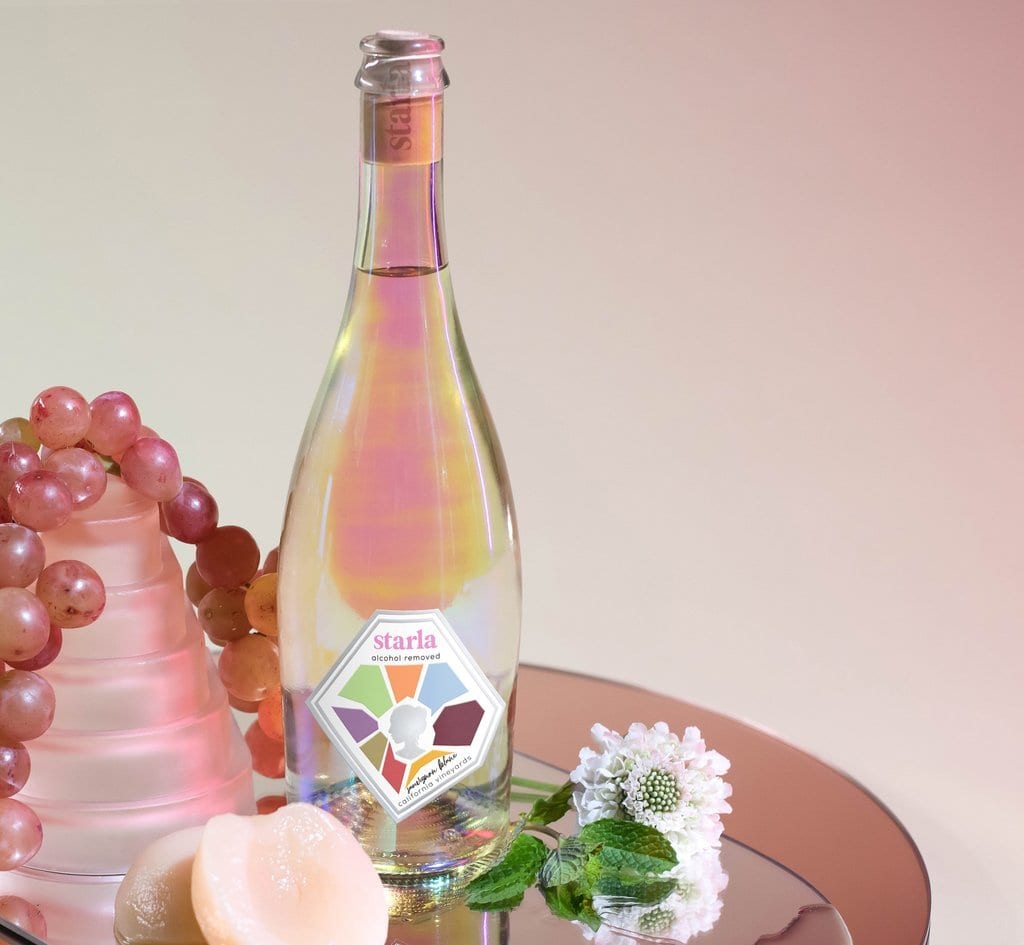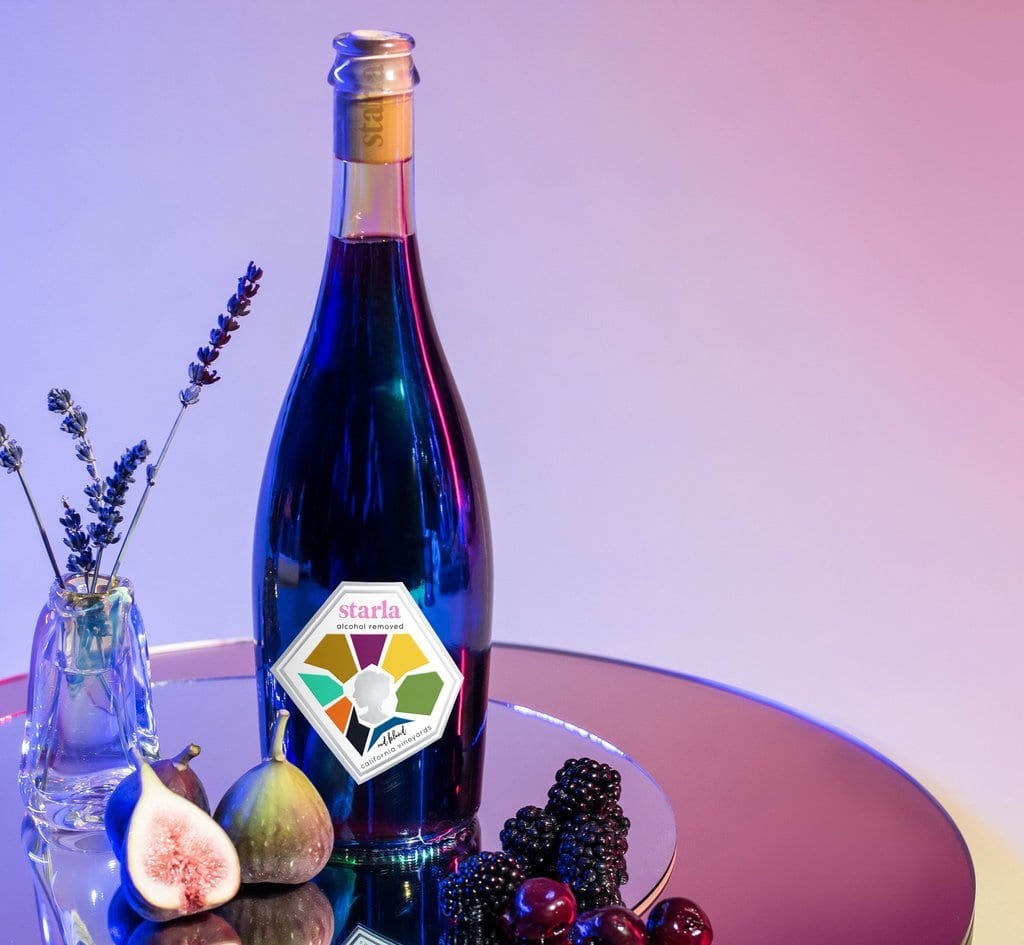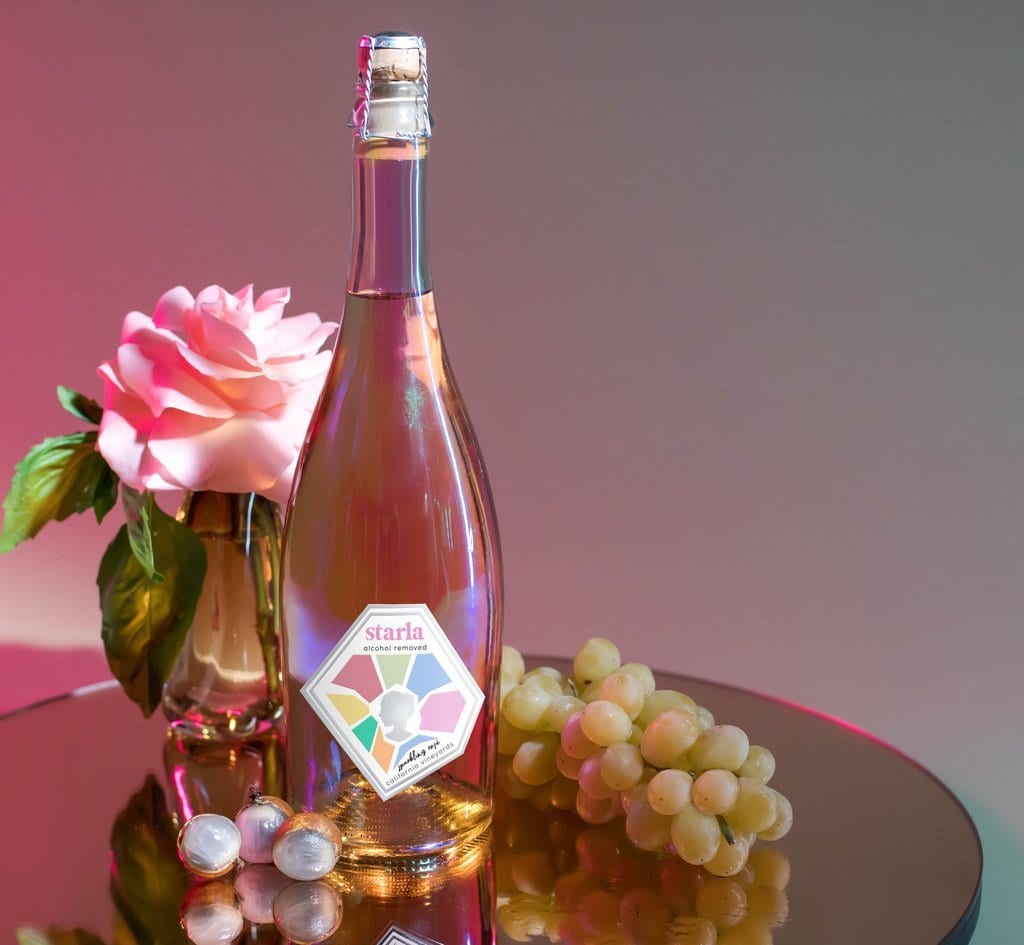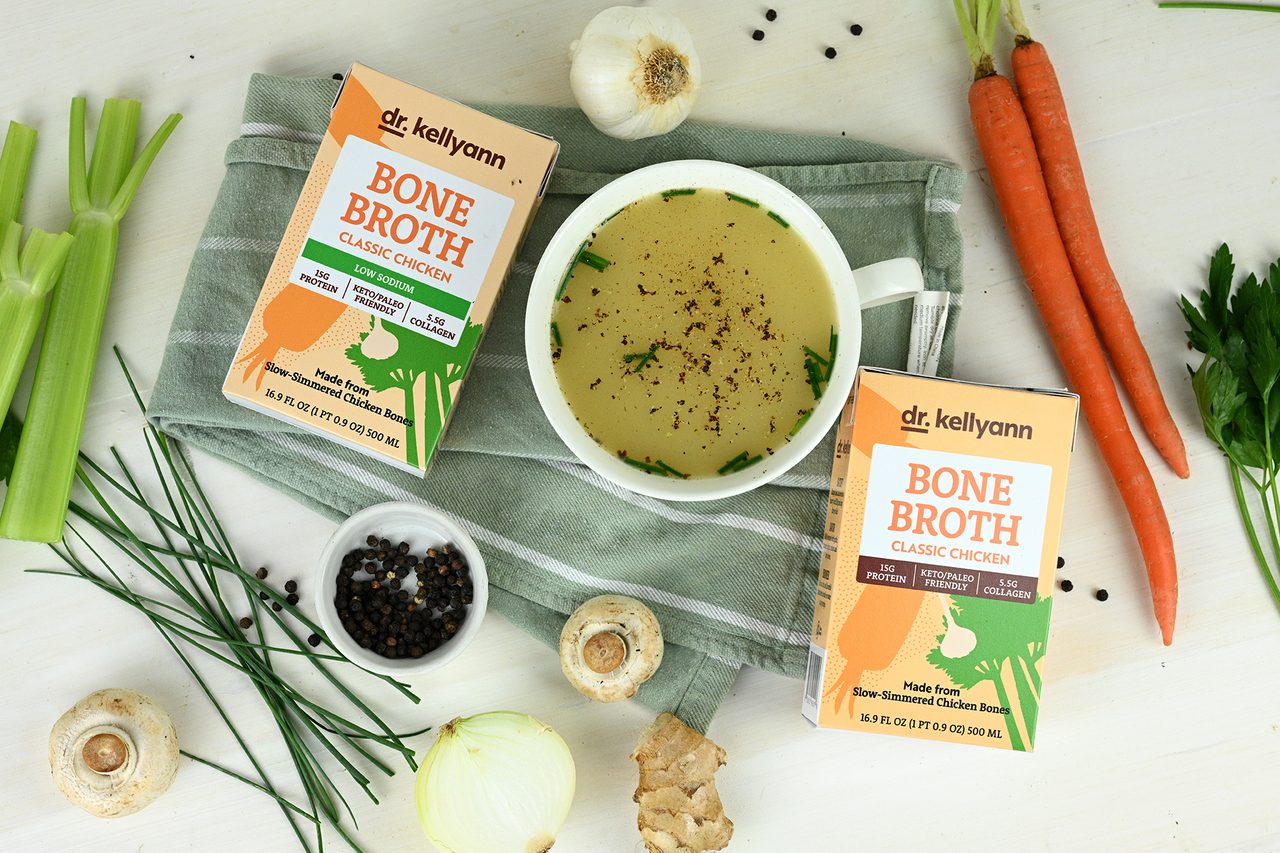Special
Report
A healthy life
By Barbara Harfmann
More options enable health and wellness products to proliferate
(Image courtesy of Sunwink)
First coined in 1913, the often quoted idiom “an apple a day keeps the doctor away” reminds consumers to eat healthy and to think about their food and beverage choices. After overindulging over the holidays, many consumers are hitting the reset button and striking a new chord when it comes to health and wellness.
Yet, Erin Costello, communications and events associate for Niles, Ill.-based Imbibe, points out that the idea of health and wellness differs from person to person even amid an ongoing 18-month-plus global pandemic, which brought immunity to the forefront of consumers’ minds.
“Demands are beginning to shift toward focusing on different parts of health. The idea of health and wellness … is driving market expansion especially in the NoLo (no and low alcohol beverages), but overall fortification has increased across all beverage categories,” Costello says. “Energy, immunity and gut health picked up over other functions.
“Poppi’s sparkling prebiotic soda contains apple cider vinegar, and claims to support gut health and immunity, while also catering to the movement toward reduced sugar in our diets,” she continues. “This brand became wildly popular throughout the pandemic putting Poppi in the No. 1 spot in the functional soda category, based on four-week data from SPINS ending June 13, 2021.”
Available in Sauvignon Blanc, Red Blend, and Sparkling Rosé, the non-alcohol Starla features botanical flavors that are low in sugar and calories. Each bottle contains only 25 calories. (Images courtesy of Starla)



Energy drink growth also is notable, moving from No. 5 to No. 2 on the list of fastest-growing functional beverages, right behind dairy alternative beverages, she says, citing Chicago-based Glanbia Nutritionals.
Sanjeevani Dubey, research consultant for food and beverage at Fact.MR, Dubai, India, concurs that plant-based milks increasingly are being used as a substitute for conventional dairy milks as they contain less fat and calories. The demand for organic beverages/juices also is increasing across the globe.
“[T]his is expected to create vital opportunities for companies in the global beverages market. Ever-mounting demand for healthy, flavored juices with natural constituents is expected to result in significantly high sales of beverages,” Dubey explains. “Players operating in the juice market are estimated to leverage this opportunity during the forecast period. Big beverage companies are highly concentrating on [research and development] (R&D) activities to improve the multifunctional profiles of oat that provide high health benefits.”
“There has been an emergence of functional beverages hitting the market as more brands begin to innovate their formulas to match the consumer demand of health-conscious products. We can expect to see continued innovation in this category as consumers continue to expect more than simply something to quench their thirst.”
— Haleigh Resetar, corporate communications specialist at SPINS LLC
Defining wellness as an “active process of becoming aware of and making choices toward a healthy and fulfilling life,” Dubey expects the trend of consuming natural, healthy beverages to steadily increase, as preferences for healthier and premium products such as smoothies, ready-to-drink (RTD) beverages and other products with natural ingredients is being sought out by health-conscious consumers.
In fact, functional beverages and consumers turning to food and beverage as medicine, primarily prophylactically, is causing a double-digit projected compound annual growth rate of 10.49% for the functional beverage market, which is on track to reach $198.12 billion from 2021-2026, according to Research and Markets.
“The rising concerns for health and wellness, and the spreading of diseases among consumers have made consumers appreciate and incline toward plant-based products, including juices and other plant-based beverages,” Dubey says. “Plant-based products contribute to healthy eating habits, and provide more nutritional value, vitamins, minerals, and healthy fats as compared to animal-derived alternatives.”
Dr. Kellyann’s Bone Broths feature slow-simmered chicken bones, veggies and natural herbs. The low-fat, low-calorie sippable bone broths are zero sugar and contain 15 grams of protein and 5.5 grams of collagen in each serving. (Image courtesy of Veyl Ventures)

Healthfulness key mover
Yet, the key to physical and mental health from foods and beverages remains taste, the No. 1 purchase driver behind price and convenience, according to the 2020 Health Survey from the International Food Information Council (IFIC).
“Americans have a different view of themselves and their own evolving purchasing decisions: 54% of all consumers, and 63% of those age 50-plus care more about the healthfulness of their choices than they did in 2010,” the survey stated. “Of course, taste and price are more impactful for four in 10 consumers as well, which may account for the lack of overall change in trend, but healthfulness is the biggest mover.”
Dieting also is up, as 43% of Americans followed a specific diet or eating pattern in the last year (up from 38% in 2019 and 36% in 2018), with intermittent fasting taking the lead as most common. Clean eating, last year’s top diet, has dropped to second place. Demographic-wise, IFIC’s survey found that 74% of millennials at least somewhat agree that they feel confident in their ability to choose healthy foods.
David Nichols, category development and planning manager for Hoffman Estates, Ill.-based Tate & Lyle, notes that “diet” beverages have been on the market for some time, but there continues to be a clear trend toward sugar and/or calorie reduced beverage innovation.
“According to Nielsen data, low calorie and sugar free beverages have been growth drivers for the industry, with growth rates of 23% and 19% respectively over the past three years,” Nichols says. “The retail success of these beverages continues to drive further innovation and new product launch activity in this space, with an annual growth rate of 5% for the number of new reduced sugar and/or calorie beverage product launches over the past five years.”
In its February 2021 report titled “Functional Drinks in the US, 2021,” Chicago-based Mintel reports that three quarters of Americans, with the exception of those aged 55 and older who are the fastest growing segment of the population but the least engaged in the functional drinks category, are consuming drinks with select benefits, up 8% from a year ago.
“When fears of COVID-19 lessen and consumers return to pre-pandemic routines, it will be important to innovate and expand the number of benefits offered to keep new users engaged and invite new users, particularly adults 55-plus, to the category,” the report states.

Lance Collins created a line of functional beverages to help support immunity: mymuse Organic. This line of RTD enhanced waters and teas are USDA-certified organic and powered by antioxidants that support immunity and fight against free radicals, the company says. (Image courtesy of mymuse Organic)
Ranjana Sundaresan, lead research analyst at Minneapolis-based Spoonshot, stresses the importance of beverage-makers re-energizing the category. “The pandemic has left consumers feeling fatigued given the need to balance work, home life, kids, and from the stress of it all,” Sundaresan says. “Many are going to look to food and drink for that additional boost of energy during different times of the day when they are feeling drained.
“The largest category by far has been energy drinks, with top claims within this segment going to sugary, caffeinated beverages,” she continues. “But such drinks have come under fire for their high caffeine levels and the harm that they can do to the health of consumers.”
With new variants popping up, health is a major priority for consumers. References to health and wellness are trending in consumer media channels, going up by 27% and projected to increase by another 13% in the coming 12 months, Sundaresan says. Likewise, in 2021, business interest in functional beverages went up by 40%, even though functional beverages account for a very small fraction of the overall health and wellness space, she adds.
According to Spoonshot data, the Top 5 health-related conversations on social media concern weight loss (29.4%), detoxification (26.4%), gut health (6.6%), with heart health and antioxidants each at 4.9% and dental health (4.5%). The top health claims were vegan (23.7%), contains protein (21%), natural (16.7%), gluten free (11.5%) and plant based (11.3%).
“This means that beverages can no longer just focus on pure play hydration; they also have to offer something more in terms of functionality,” Sundaresan says.
Beverages focus on functionality
Beverages offer on-the-go consumers a fast way to introduce functional ingredients into their systems, which are bound to increase further as the world returns to a more normal way of life.
Haleigh Resetar, corporate communications specialist at Chicago-based SPINS LLC, explains that functional beverages with no sugar and those that are non-GMO and organic are finding favor.
“Some of the top ingredients include mushrooms, beet root, taurine and lavender. Refrigerated RTD coffee and tea has grown 20.3% in the last year, with shelf-stable RTD tea and coffee also growing,” she says. “There has been an emergence of functional beverages hitting the market as more brands begin to innovate their formulas to match the consumer demand of health-conscious products. We can expect to see continued innovation in this category as consumers continue to expect more than simply something to quench their thirst.”
In the natural and enhanced conventional channel for the 52 weeks ending Nov. 28, 2021, SPINS reports shelf-stable functional beverages were up 96.7%, slightly eclipsed by the shelf-stable energy and functional beverages segment which saw 108% growth. Shelf-stable performance beverages and refrigerated kombucha and fermented beverages, however, declined 11.4% and 5%, respectively.
Within shelf-stable and refrigerated RTD coffees and teas, products labeled organic and refrigerated varietals fared better than those labeled non-GMO. Organic refrigerated RTD tea and coffee were up 33.5%, while shelf-stable organic varietals saw a 17.4% increase for the same time period, SPINS data says. At 11.1%, shelf-stable RTD non-GMO teas and coffees saw slightly more sales than its refrigerated counterparts, which boasted 10.3% growth.
According to Statista, retail sales of functional beverages in the United States are projected to reach $18.6 billion in 2022, with the functional water category booming with sales of $5.3 billion.
During the pandemic, beverage entrepreneur Lance Collins expanded his legacy of innovative beverages when he founded mymuse Organic, a line of functional beverages to help support immunity. This line of RTD enhanced waters and teas are USDA-certified organic and powered by antioxidants that support immunity and fight against free radicals, the company says.
Bringing plant-powered “beauty from within” wellness to the masses, San Francisco-based Sunwink announced that its line of Superfood Powders now is available at more than 1,800 Target stores across the United States. The flavors include Cacao Clarity for caffeine-free energy and focus, Beauty Fruit Punch for hydration and radiant skin, and Digestion Lemonade to help with debloating.
With weight management inexplicably tied to health and wellness and with more than 650 million adults worldwide obese, Nathan Pratt, nutrition scientist for Kerry Taste & Nutrition, Beloit, Wis., notes that obesity is the No. 1 preventable risk factor for diseases like type 2 diabetes and hypertension.
He also points out that the way consumers look at nutrition is much different than it was in the past, with today’s consumers focusing on the positive functional benefits of the foods and beverages they consume.
“We have moved from a mindset of deprivation or restriction to one focused on the question of ‘What is my food or beverage helping me do better?,’” he says. “It’s interesting to note that over the last 12 months, almost 40% of American consumers have taken on improving their physical health by changing what they eat. One quarter of consumers have targeted dieting or losing weight by choosing specific foods and beverages to reach those goals.
“Also, weight management has become less about appearance and more about health and to this end, beverages that have functional beneficial attributes such as protein fortification, immune or digestive support can be very attractive to consumers,” he continues. “American consumers are increasing protein and fiber consumption and reducing their sugar and carbs — they’re reaching for plant-based, organic and natural products with botanicals and herbals that can help them live their best life.” BI
